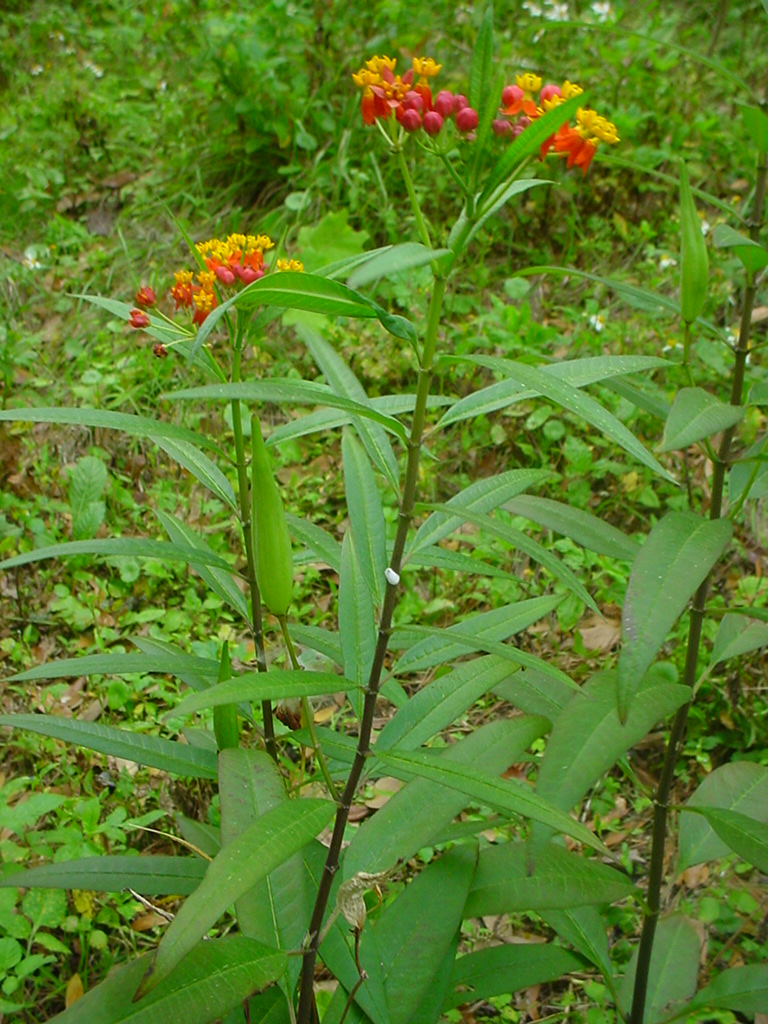Common Name: scarlet milkweed
Family: Apocynaceae
Common Synonyms: none
USDA Hardiness Zone: 8a-11
Growth Habit: Perennial herb
Origin: Tropical America
FISC Category: -
FDACS Listed Noxious Weed: No
Introduction Date: Earliest Florida specimen vouchered in 1942
IFAS Assessment:

Perennial herb (sometimes can be annual), erect and glabrous, to 1.2 m tall. Milky sap throughout. Stems are dull green, round, and smooth, leaves simple, opposite, short stalked, lanceolate, 7-13 cm long with a narrow base. Inflorescence is a cluster of 6-15 flowers, flowers radially symetrical, bright red or orange with yellow centers, 5 petals. Corolla lobes reflexed with inwardly curved horns. Fruit a pair of dry, dehiscent, spindle-shaped follicles, 5-15 cm long, many seeded. Seeds with a tuft of while silky hairs.
Disturbed areas
Seeds are wind dispersed. Widely naturalized in the tropics.

NA
Dave's Garden. 2014. PlantFiles: Bloodflower, Asclepias curassavica. http://davesgarden.com/guides/pf/go/197508/. Accessed on June 20, 2014.
Mangrove Mountain. 2014. Asclepias currassavica. http://www.weeds.mangrovemountain.net/data/Asclepias%20curassavica%20-%20Redhead%20cotton%20bush.pdf. Accessed on June 25, 014.
PIER. 2013. Pacific Island Ecosystems at Risk (PIER): Asclepias currassavica. http://www.hear.org/pier/species/asclepias_curassavica.htm. Accessed on June 25, 2014.
Wunderlin, R. P., and B. F. Hansen. 2008. Atlas of Florida Vascular Plants (http://florida.plantatlas.usf.edu/).[S. M. Landry and K. N. Campbell (application development), Florida Center for Community Design and Research.] Institute for Systematic Botany, University of South Florida, Tampa.